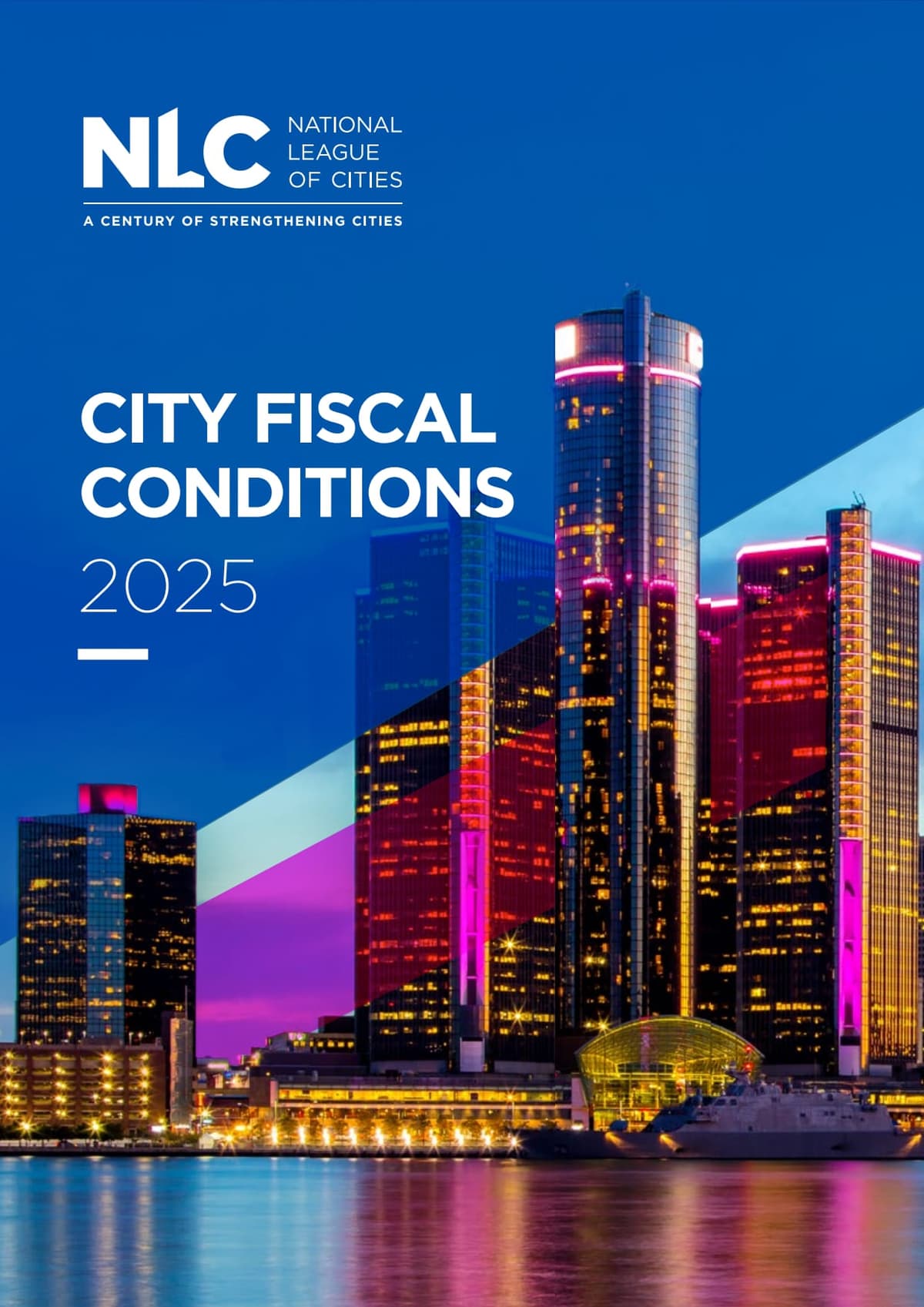As cities move beyond the rapid post-pandemic rebound, the National League of Cities’ 2025 City Fiscal Conditions report shows that municipal governments are entering a new phase; one shaped by tighter budgets, slower growth, and increasing uncertainty. Drawing on data from 263 cities and 213 municipal budgets, the report illustrates how federal aid is winding down, inflation persists, and external policy pressures are reshaping local fiscal realities.
“City leaders are on the frontlines of America’s economy and have shown their resilience, particularly these last few years coming through the pandemic and more,” said Clarence E. Anthony, CEO and Executive Director of the National League of Cities. “As the fiscal landscape shifts for municipalities, once again, they are pivoting and responding to ensure they can continue to build strong communities and make the critical investments in housing, infrastructure and public safety — that are top of mind, important to their residents and for the continued strengthening of the national economy.”
Shift from Recovery to Restraint
Cities that experienced strong financial momentum just a year ago are now seeing conditions level off. Municipal leaders are adjusting their expectations as growth slows and revenue pressures mount. The data indicates a clear cooling trend:
- 7.5% increase in general fund spending in FY2024
- Only 0.7% growth in FY2025
- Projected 1.9% drop in revenues for FY2025
This shift signals that cities are moving away from the unique conditions of pandemic-era funding and into a period requiring tighter management and more conservative fiscal planning.
Community Investment Continues, Especially in Public Safety
Even amid slower revenue growth, cities are still prioritizing core services that their residents rely on. The report shows that municipalities remain committed to investments that strengthen community safety and quality of life:
- Public safety accounts for 60% of general fund spending in FY2025
- Recreation and culture spending hold steady at around 10%
These spending patterns suggest that while budgets may tighten, cities are working hard to preserve the programs most essential to daily life and community well-being.
Fiscal Confidence Declines as External Pressures Build
The fiscal outlook for the coming year is increasingly cautious. City finance officers are navigating rising costs and monitoring national policy discussions that could significantly affect local budgets. The report highlights declining confidence among municipal leaders:
- Only 45% feel optimistic about meeting fiscal needs in FY2026
- Down from 64% feeling optimistic the previous year
Key concerns include:
- Rising operational and personnel costs
- Infrastructure needs outpacing resources
- Tariffs increasing procurement expenses
- Potential elimination of the municipal bond tax exemption, which many cities say would delay or downsize capital projects

Cities Prepare for Tighter Budgets in 2026
Looking ahead, municipalities are actively planning for what may be a more constrained fiscal future. Many cities are taking proactive steps to adapt their operations and protect essential services. Strategies include:
- Reprioritizing spending toward core functions
- Exploring alternative financing tools and partnerships
- Adjusting procurement practices and local supply strategies
- Reassessing capital plans given policy uncertainty
Cities are approaching 2026 with a mix of caution and pragmatism, shifting from short-term recovery tactics to long-term resilience planning.
